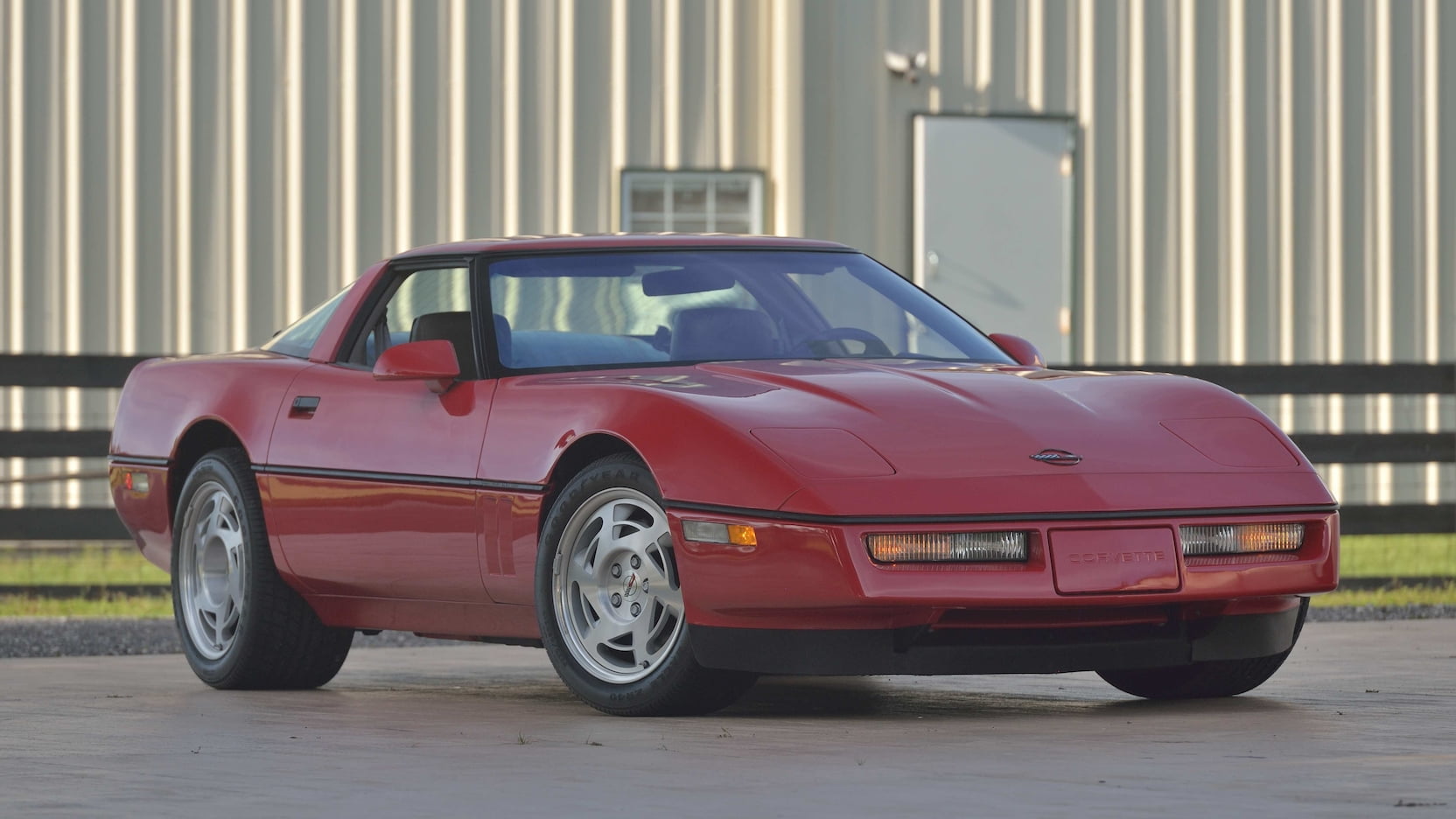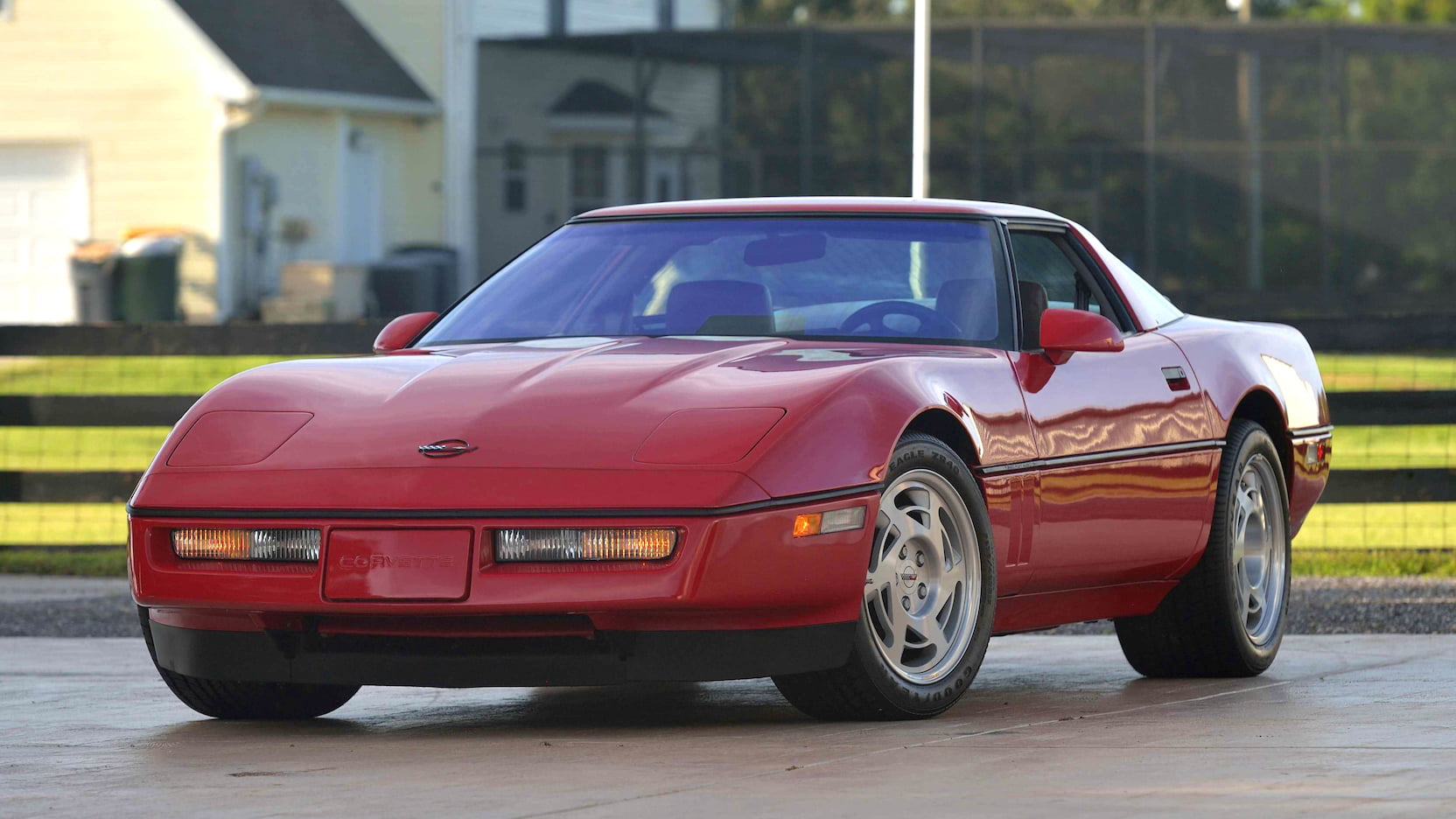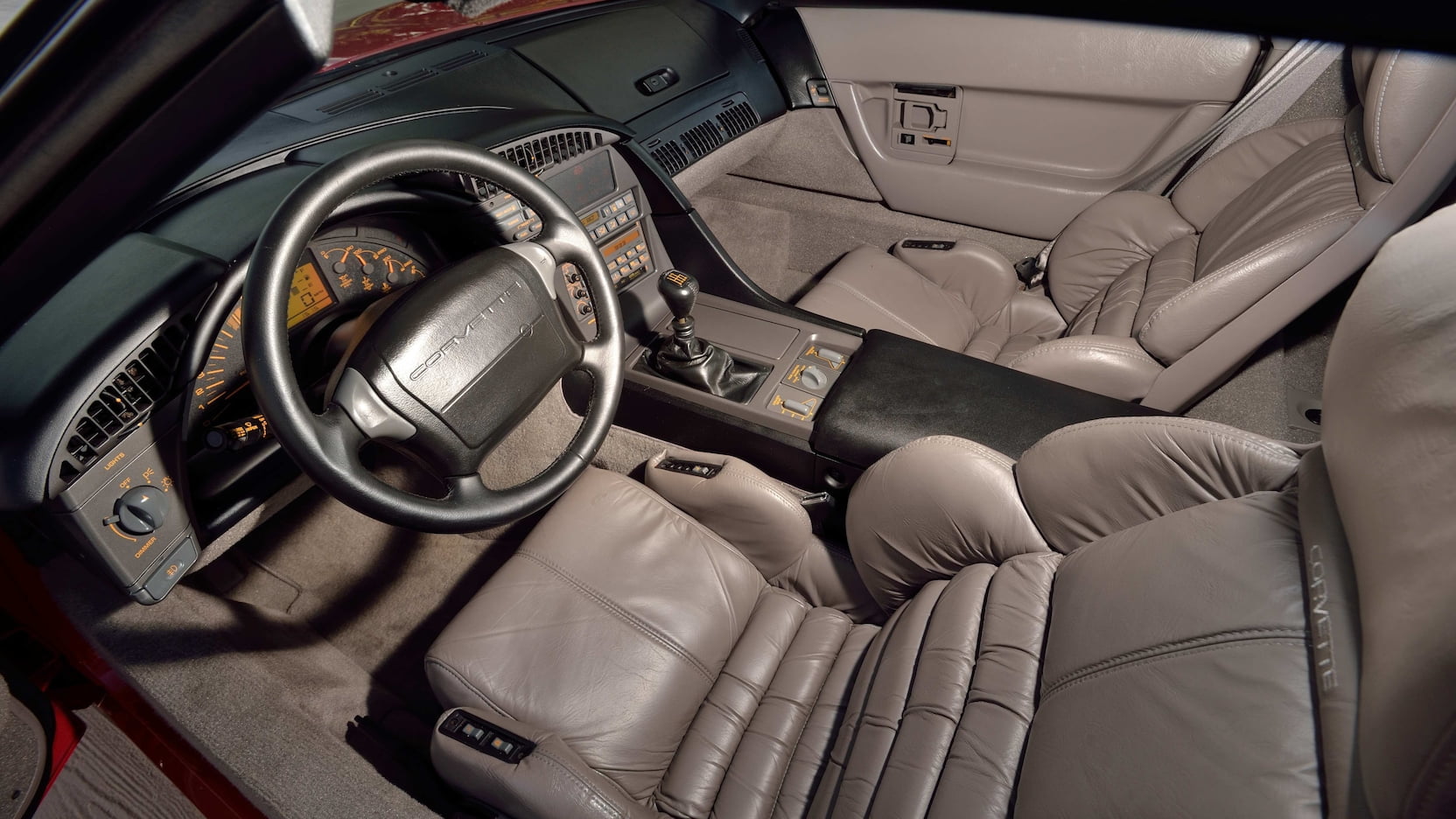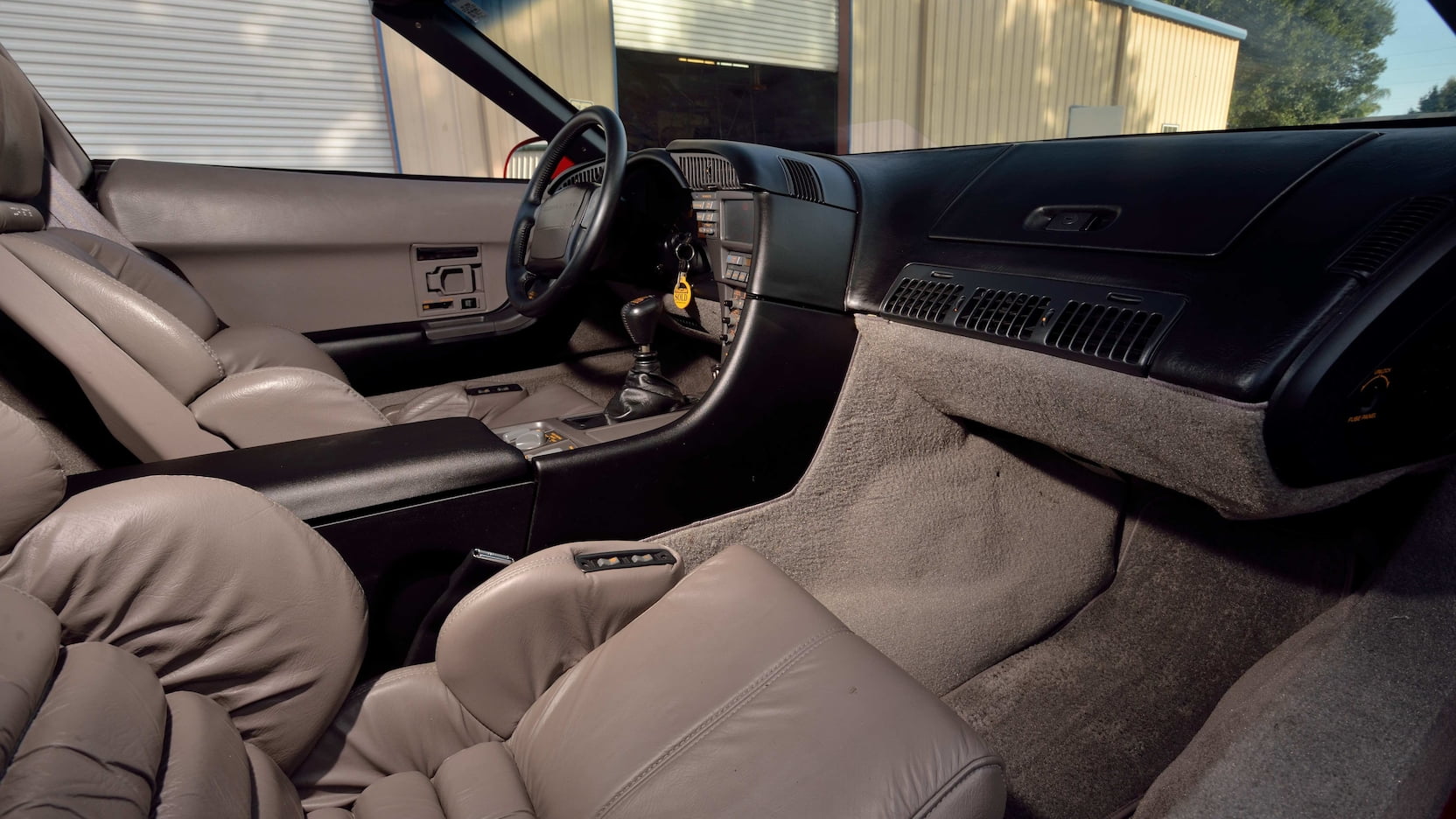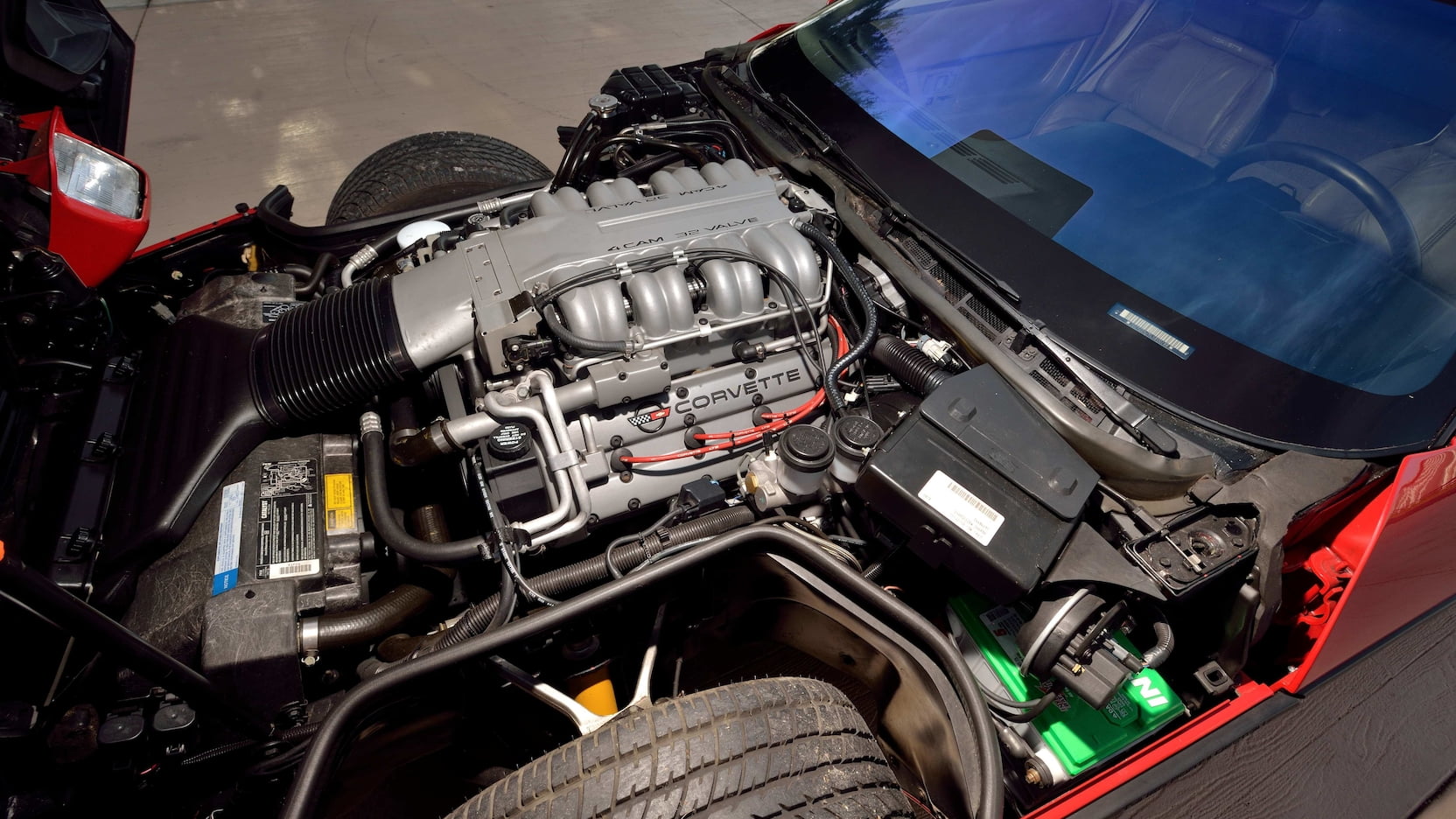Lest you forget: The C4 Corvette ZR-1 was America’s supercar
They called the prototype “King of the Hill.” In production, the ZR-1 was the Corvette that Chevrolet built to take on the world, and it was every bit the “super ’Vette” that Corvette chief engineer Dave McLellan had hoped for.
The major component was its LT5 engine, a V-8 born of Chevrolet and Lotus engineering and assembled by Mercury Marine. It shared the same 5.7-liter displacement with the base C4’s L98 pushrod engine, but little else. The quad-cam, 32-valve, 375-hp LT5 was nothing short of exotic, with trick bits like 16 intake runners that fed hemispherical combustion chambers, and a forged rotating assembly swinging 11:1-compression pistons in Nikasil-coated aluminum bores, all the way to 7200 rpm. These are top-shelf specs even today, but in 1990? The LT5 was a superstar in a sea of warmed-over, malaise-era crap engines rolling out of Detroit.
A special ZF six-speed transmission and taller 3.33:1 gearing helped the ZR-1 reach supercar terminal velocities. Its adjustable FX3 Bilstein suspension, also created with Lotus, was similar to the system Porsche put in the 959. The ZR-1’s body was widened to tuck in fat 11-inch rear wheels wearing 315/35-17 tires—another “holy smokes” concept in 1990. The numbers—0 to 60 mph in the four-second range and a 180-mph top speed—spoke for themselves.
But this greatness wasn’t cheap. In 1990, the ZR-1 option package cost a staggering $27,016 on top of the $31,979 base price of a standard Corvette. Additional dealer markup meant that paying $100,000 for a new ZR-1 was not unheard of. That was Ferrari Testarossa and Lamborghini Countach territory. By 1991, the ZR-1 package price had grown to over $31,000, where it would remain through 1995, the last year of production. In the end, Chevrolet sold 6922 ZR-1s.

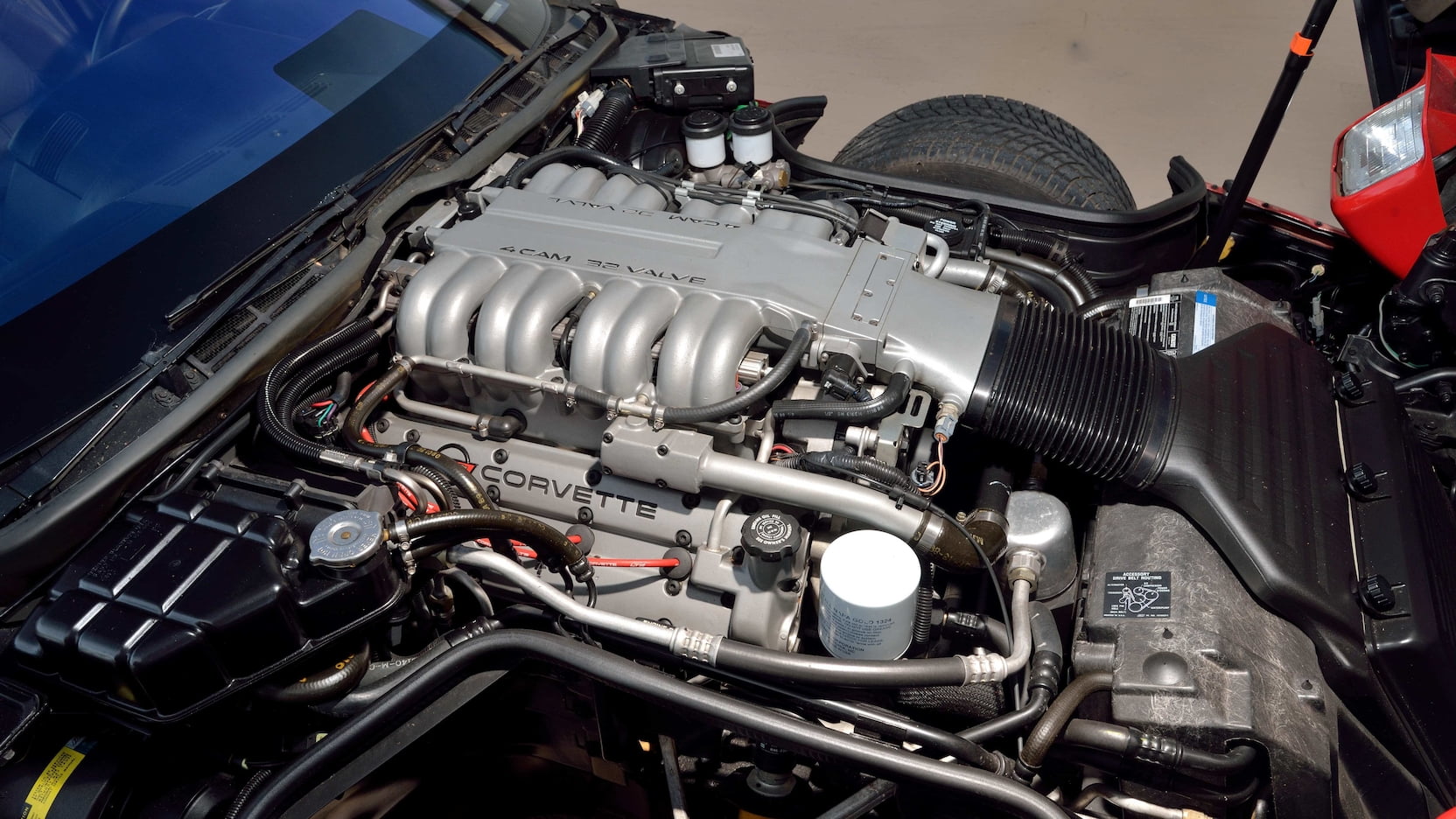

Today, while still highly regarded, the C4 ZR-1 has fallen from grace in the market. In fact, they trade for just a small premium over their L98-powered brethren. The Hagerty Price Guide and recent sales show that, with similar miles, a #2-condition 1991 L98 Vette sells for about $13,000 to $17,000; a 1991 ZR-1 will sell in the $20,000-to-$25,000 range. Even the 405-hp 1993–95 ZR-1s hover at roughly a $10,000 premium over the base C4s. Essentially, you can buy a whole car today for less than the cost of the option package.
But why? Some of what’s holding the ZR-1 back stems from the fear of the LT5’s complexity. Those who know these cars, however, speak highly of the engine’s durability, and examples with 200,000-plus miles on them are out there. Apprehension over parts availability is another factor. Sure, GM no longer stocks LT5 engine parts, but they are not hard to find in the aftermarket.
There are other intricacies to the ZR-1 market, too, such as the divide over what’s more desirable—the pre-face-lift first-year 1990 model, with its chiseled front and rear bumpers, or the more rounded 1991–95 cars. Buyers seem to make the argument both ways. But among serious collectors, the age-old factor of mileage reigns supreme. Most place a high value on extremely low-mileage cars and heavily discount those that have anything beyond a single-digit odometer. The sweet spot for me would be about 25,000 miles—high enough to know the car doesn’t have shelf rot while also getting a good discount from an “in the wrapper” car, and low enough to be able to add a couple thousand miles a year to enjoy it without getting murdered come resale time.
Today’s C7 Corvette shows how far we’ve come from the C4’s chassis and ergonomics, but that LT5 is still so enjoyable that it makes having to climb over the wide sill and into the cramped, plastic-lined cockpit worthwhile. Which really begs the question as to why values of America’s supercar have remained so flat for so long. The answer might lie in the fact that more modern machinery—and budget-priced C5 Corvettes—offer more performance and amenities for less money. But like everything else on the rise from the 1980s and 1990s, I do think C4 ZR-1s will soon escape from the “just a used car” syndrome and come into their own. After all, these were the top dogs in their day, and everything is cyclical. Add to that the emerging “Radwood effect” we’re seeing with poster cars of this era, and it sure seems like you could do a lot worse than buy the ultimate 1990s Corvette for half of what a new Silverado will cost you.
The article first appeared in Hagerty Drivers Club magazine. Click here to subscribe to our magazine and join the club.
